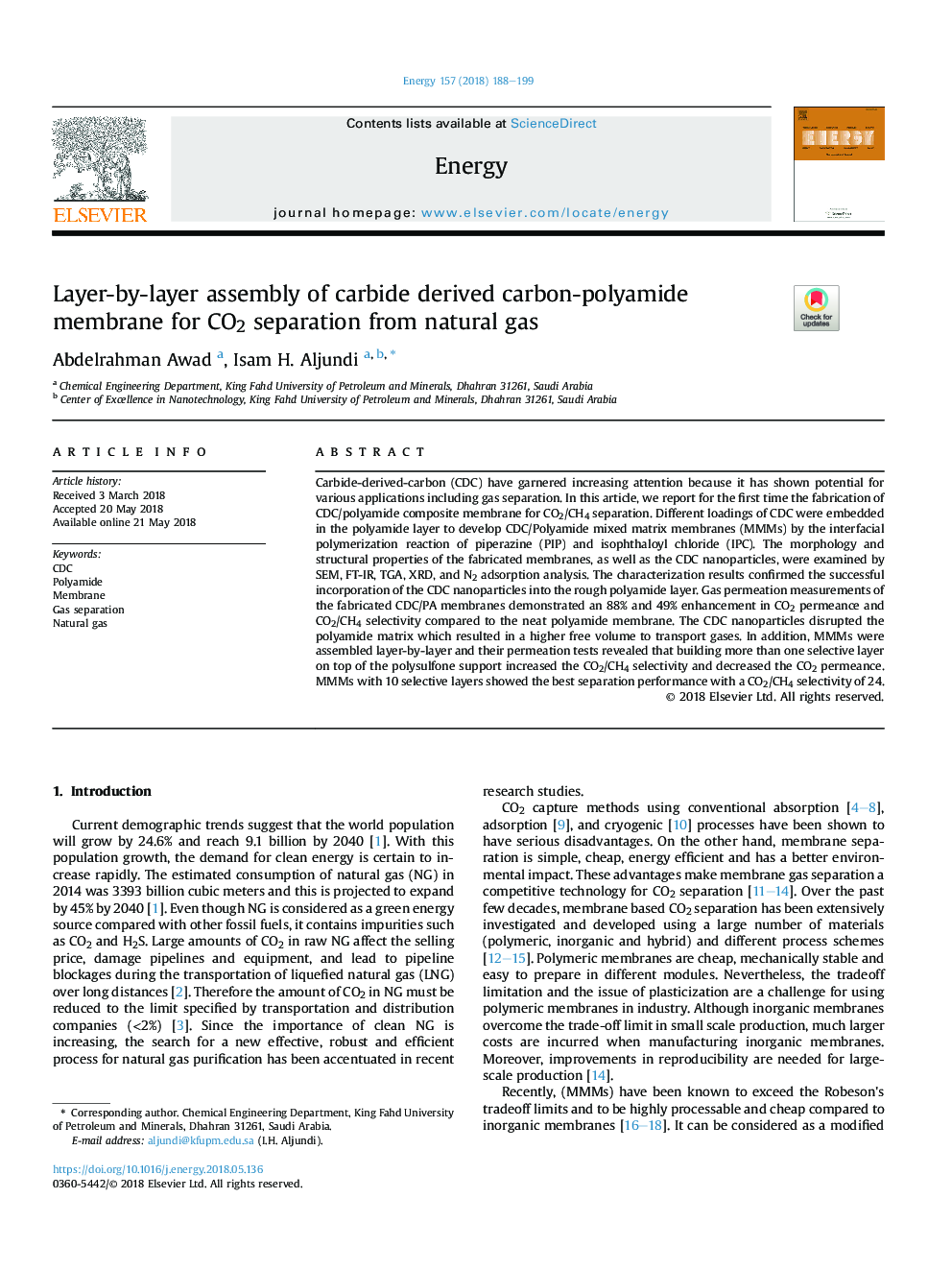| Article ID | Journal | Published Year | Pages | File Type |
|---|---|---|---|---|
| 8071212 | Energy | 2018 | 12 Pages |
Abstract
Carbide-derived-carbon (CDC) have garnered increasing attention because it has shown potential for various applications including gas separation. In this article, we report for the first time the fabrication of CDC/polyamide composite membrane for CO2/CH4 separation. Different loadings of CDC were embedded in the polyamide layer to develop CDC/Polyamide mixed matrix membranes (MMMs) by the interfacial polymerization reaction of piperazine (PIP) and isophthaloyl chloride (IPC). The morphology and structural properties of the fabricated membranes, as well as the CDC nanoparticles, were examined by SEM, FT-IR, TGA, XRD, and N2 adsorption analysis. The characterization results confirmed the successful incorporation of the CDC nanoparticles into the rough polyamide layer. Gas permeation measurements of the fabricated CDC/PA membranes demonstrated an 88% and 49% enhancement in CO2 permeance and CO2/CH4 selectivity compared to the neat polyamide membrane. The CDC nanoparticles disrupted the polyamide matrix which resulted in a higher free volume to transport gases. In addition, MMMs were assembled layer-by-layer and their permeation tests revealed that building more than one selective layer on top of the polysulfone support increased the CO2/CH4 selectivity and decreased the CO2 permeance. MMMs with 10 selective layers showed the best separation performance with a CO2/CH4 selectivity of 24.
Related Topics
Physical Sciences and Engineering
Energy
Energy (General)
Authors
Abdelrahman Awad, Isam H. Aljundi,
